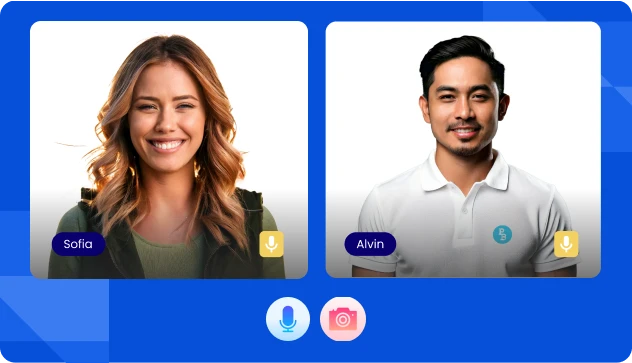Key Takeaways
- Learning how to write 2 week notice isn’t just about following protocol. It’s your final first impression. Done right, it reinforces your professionalism, protects your reputation, and sets the stage for future opportunities.
- Remote, hybrid, and onsite roles require different resignation signals. How you exit says a lot about how you work, especially in distributed teams.
- The best resignations are clear, calm, and career-minded. Craft a message that closes one chapter and opens the door to what’s next, without burning bridges.
What Is a 2-Week Notice?
A 2-week notice is a formal resignation letter submitted to your employer, giving two weeks’ advance notice before your final working day. It’s a professional courtesy that allows time for transition, knowledge transfer, and operational continuity.
Resigning Well Is a Career Skill
Resigning is often viewed as the end of a job. But in today’s globally connected workplace, it’s actually the start of your next professional chapter. Whether you’re a seasoned professional preparing to join an international team or a global talent making a career pivot, how you leave says just as much about you as how you work.
A two-week notice is more than a document. It’s actually a “power move” tool, when done right. It demonstrates maturity, clarity, and long-term thinking. This guide explores what most resignation articles miss: tailoring your notice based on role complexity, work setup, and future career intent.
What Your Resignation Signals and How to Get It Right
Your 2-week notice doesn’t live in a vacuum. It’s often the final artifact tied to your personal brand within the company. And in remote or global teams, it could be forwarded to leadership you’ve never met, or even your future employer, via references.
What it signals:
- You understand transitions are professional events, not emotional exits.
- You manage change with composure and foresight.
- You value relationships and leave space for future collaboration.
Commonly Overlooked Errors:
- Leaving vague statements like “moving on to new challenges” without a clear handoff plan.
- Writing overly formal or cold notices that strip out all humanity.
- Assuming your resignation ends your visibility, in reality, it can magnify it.
Know Your Exit Type
Not all exits are created equal. How you resign should mirror the nature of your role and your working environment. Here’s how to personalize your message without overcomplicating it.
A. By Role Complexity:
- Straightforward Roles: Admin or ops roles often have repeatable tasks. Keep the letter short and gracious, but offer to outline standard procedures.
- Mid-Level to Strategic Roles: Finance, product, or marketing roles require stakeholder mapping and handover strategies. Your resignation should reflect that responsibility.
- Highly Specialized or Client-Facing Roles: Think IT, sales, or legal. Use your notice to signal accountability and minimize disruption.
B. By Work Setup:
- Remote: Clarify handover methods, documentation, and scheduling across time zones.
- Hybrid: Coordinate both digital and physical transitions.
- Onsite: Address returns of physical assets and in-person farewells with HR/admin.
What to Know Before You Write
Before you write a single word, ground yourself in these fundamentals:
- Contractual Requirements: Do you owe 15 days or 30? Some Philippine contracts differ from global norms.
- Sequence of Communication: Don’t send the letter to HR before your manager. Start with a verbal heads-up if possible.
- Timing Matters: Avoid peak seasons, product launches, or transition periods if you can.
- Respect Cultural Norms: If your company spans the US and the Philippines, write with both professionalism and cultural fluency.
How to Write a Career-Forward 2-Week Notice
Think of your letter as a signal to multiple audiences: your current manager, your colleagues, HR, and sometimes, future employers. Your tone should be calm, collaborative, and quietly confident.
Core Elements:
- Clear statement of resignation and last working day
- Appreciation for the experience or relationships
- Offer to support transition planning
- Optional: A forward-facing line that hints at growth
Example:
“As I prepare for my next opportunity in a global remote role, I’m grateful for the collaborative culture and mentorship I received here.”
2-Week Notice Letter Templates for Different Roles
These templates are designed for practical use across different work setups and responsibilities. Whether you’re in an operations role, a cross-functional leadership position, or part of a distributed team, use these samples to guide your tone and structure.
Template 1: For Generalist Roles
Ideal for administrative, support, or routine tasks with minimal handover complexity.
Dear [Manager’s Name],
I would like to formally notify you of my resignation, which will take effect on [Date]. Thank you for the opportunity to be part of a team that values clarity and consistency. I’ll support a smooth transition to ensure work continues without disruption.
Sincerely,
[Your Name]
Template 2: For Mid-Level Roles in Transition
Best for roles that involve cross-team coordination, project handoffs, or strategic involvement.
Dear [Manager’s Name],
I’d like to formally step down from my role, effective [Date] as my final day. I’m grateful for the trust and shared wins we’ve built during my time here. To support continuity, I’m preparing documentation and will gladly join briefings to ensure the team moves forward with ease.
Warm regards,
[Your Name]
Template 3: For Remote Roles or Global Teams
Tailored for distributed work environments where async communication and documentation matter.
Dear [Manager’s Name],
This is to confirm my resignation from the company, with [Date] as my final day. Working in a collaborative remote setup has sharpened my communication and autonomy, and I’m proud of what we’ve achieved together. I’ve documented my responsibilities and will ensure a clear and organized handover.
Thank you,
[Your Name]
2-Week Notice Templates for Personal Reasons
These templates reflect real-life scenarios where professionalism meets empathy. Use them when life circumstances shape your decision to resign.
Template 4: Health Reasons
When stepping away to focus on medical care or personal well-being.
Dear [Manager’s Name],
I’m submitting this letter as formal notice of my resignation, effective [Date], as I’ve chosen to prioritize my health and well-being. I’m grateful for the support and opportunities I’ve experienced here and will do my best to ensure a smooth transition in the coming days.
Sincerely,
[Your Name]
Template 5: Family or Caregiving Commitments
For those prioritizing time with family or taking on caregiving responsibilities.
Dear [Manager’s Name],
After much reflection, I’m writing to formally step down from my role, with my last day on [Date].. Due to family responsibilities that require my attention, I’ve made the difficult decision to step away. Thank you for the understanding and the experience I’ve gained while being part of this team. I’ll do what I can to assist in wrapping up ongoing work.
Warm regards,
[Your Name]
Template 6: Relocation
When moving cities or countries, and unable to continue in the same role.
Dear [Manager’s Name],
This letter serves to inform you of my resignation, which will take effect on [Date]. I will be relocating to [Location], which means I’ll be unable to continue in my current role. I’m thankful for the meaningful work and growth during my time here and am preparing handover materials to help with the transition.
Best,
[Your Name]
Leave Well, Stay Top of Mind
The way you manage your last two weeks can boost your professional capital. Treat it as an onboarding moment for whoever comes next.
- Offer clear deliverables (transition guides, contact lists, current project status)
- Schedule handover calls or documentation walkthroughs
- Say personalized goodbyes, especially in remote teams where relationships are less visible
Your Post-Notice Strategy
Exiting a role doesn’t end your career visibility. In fact, it enhances it when done well.
- Connect on LinkedIn with teammates and managers
- Ask for testimonials while contributions are still fresh
- Keep your resume and profiles updated with outcomes, not just job titles
FAQs: Writing Your 2-Week Notice
Q: How do I write a simple 2-week notice letter?
A: Keep it short and professional: state your resignation, give your last day, express appreciation, and offer to help with the transition.
Q: Is a 2-week notice required in the Philippines?
A: Many employment contracts require 30 days, but always check your signed agreement. A 2-week notice may apply to project-based or contractual roles.
Q: Can I email my resignation letter?
A: Yes, especially in remote roles. But it’s best to discuss your resignation verbally or via video call first.
A Good Exit Sets the Stage for a Great Next Step
A thoughtful resignation builds trust, opens doors, and leaves a positive legacy. For seasoned professionals stepping into global roles, it signals readiness. For any career stage, it proves you’re someone who finishes strong. And for companies watching how you leave, it’s often the final reason they remember your name.
Thinking about your next chapter? If you’re exploring career moves with growth-minded global teams, check open roles at Penbrothers.






